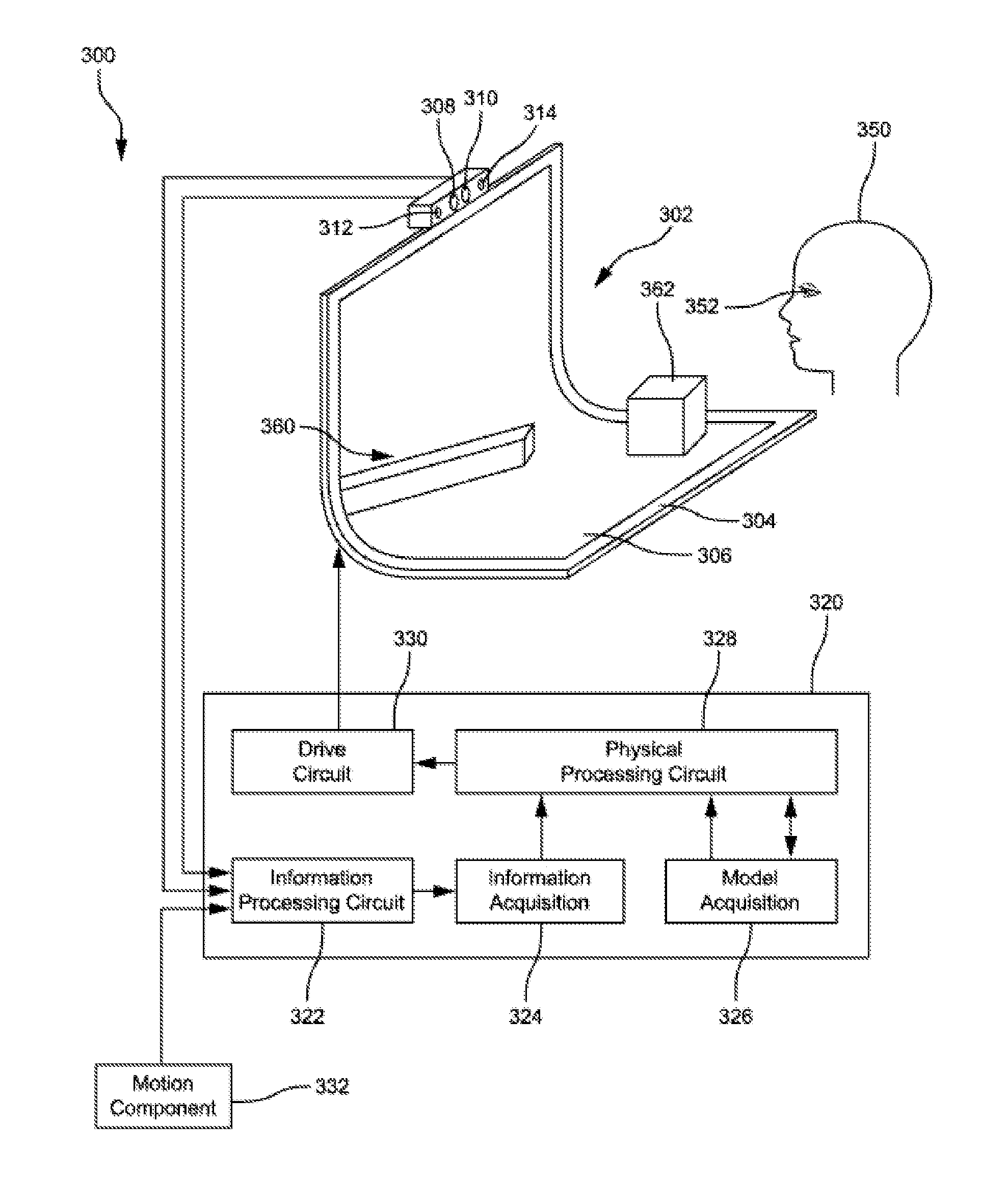Flexible display device and computer with sensors and control approaches
a display device and computer technology, applied in computing, color television details, instruments, etc., can solve the problems of hard to move documents from one surface to the other, interfaces have barely found their way into everyday workspaces, and devices are not bound, so as to improve the useability of visual information, reduce the reachability, and improve the presentation
- Summary
- Abstract
- Description
- Claims
- Application Information
AI Technical Summary
Benefits of technology
Problems solved by technology
Method used
Image
Examples
first embodiment
[0052]In order to provide various functionality described herein, FIG. 3 illustrates an example set of basic components of a flexible electronic visual display device 300 according to a In this example, the flexible electronic visual display device 302 features as components a flexible housing 304, a flexible capacitive or resistive multi-touch display screen 306, an image sensor or camera 308, a three-dimensional depth sensor 310, and dual-array microphones 312, 314 as information capture elements, and a control system 320, to display a three-dimensional scene 360 on the display screen to a user attempting to create, maintain, and improve a perception of depth.
[0053]The control system 320 includes an information processing circuit 322, an information acquisition component 324, a model acquisition component 326, a type of physical processing circuit 328, such as a programmable visual graphics processing unit (GPU) for example, and a drive circuit 330.
[0054]As would be apparent to o...
second embodiment
[0062]FIG. 4 illustrates an example set of basic components of a flexible electronic visual display device 400 according to a In this example, the flexible electronic visual display device 402 has a flexible housing 404, a flexible multi-touch display screen 406, four information capture elements 408, 410, 412, 414 positioned at various locations on the same side of the device as the display screen 406, a projector device 416, and a control system 420 enabling the display device to capture sensor information about a user of the device during typical operation where the user is at least partially in front of the flexible electronic visual display device, and to project images on the display screen or / and on an arbitrary object 462 put on the horizontal surface of the electronic device.
[0063]The control system 420 includes an information processing circuit 422, an information acquisition component 424, a model acquisition component 426, a type of physical processing circuit 428, such...
third embodiment
[0066]FIG. 5 illustrates an example set of basic components of a flexible electronic visual display device 500 according to a In this example, the flexible electronic visual display device 502 has a flexible housing 504, a flexible multi-touch display screen 506, four information capture elements 508, 510, 512, 514 positioned at various locations on the same side of the device as the display screen 506, a three-dimensional scanner device 518, and a control system 520 enabling the display device to capture sensor information and to scan and digitalize an arbitrary object 562 put on the horizontal surface of the electronic device.
[0067]The control system 520 includes an information processing circuit 522, an information acquisition component 524, a model acquisition component 526, a type of physical processing circuit 528, and a drive circuit 530. The four image sensors 508, 510, 512, 514 and the control system 520 work together in the same way as described in relation with the secon...
PUM
 Login to View More
Login to View More Abstract
Description
Claims
Application Information
 Login to View More
Login to View More - R&D
- Intellectual Property
- Life Sciences
- Materials
- Tech Scout
- Unparalleled Data Quality
- Higher Quality Content
- 60% Fewer Hallucinations
Browse by: Latest US Patents, China's latest patents, Technical Efficacy Thesaurus, Application Domain, Technology Topic, Popular Technical Reports.
© 2025 PatSnap. All rights reserved.Legal|Privacy policy|Modern Slavery Act Transparency Statement|Sitemap|About US| Contact US: help@patsnap.com



